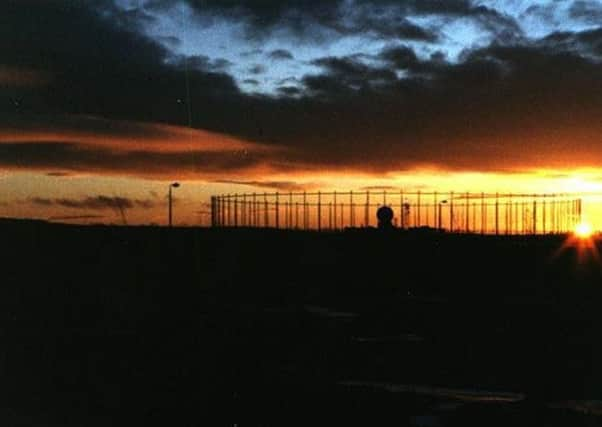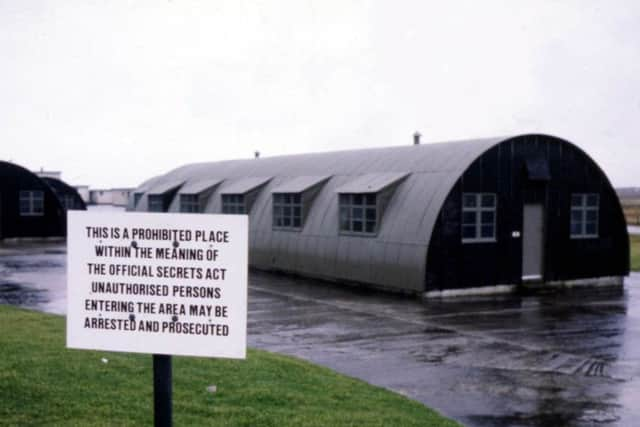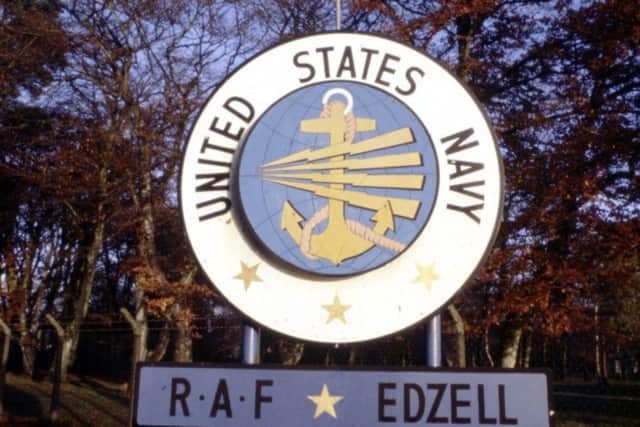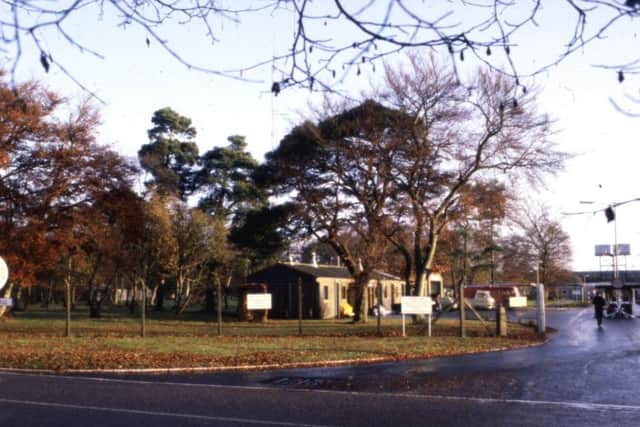Remembering the lost Cold War '˜spy base' of RAF Edzell


Part futuristic and part menacing, everyone called the huge spheres the ‘golf balls’ - but of course no one outwith the checkpoints and heavy loops of barbed wire that enclosed the site had a clue what they were truly for.
There was talk of spies, satellites, submarines and espionage but RAF Edzell remained a complete enigma to the surrounding community for almost 40 years.


Advertisement
Hide AdAdvertisement
Hide AdFathers who worked there didn’t talk about their jobs, even to their families, and rumours perpetuated around the towns and villages to fill in the blanks.
The story that an underground channel ran from the Atlantic to the base, where submarines would go and refuel and get stocked up with weapons, was a popular line.
For hundreds of US servicemen and women sent to RAF Edzell, the reality was that the posting in Scotland was a dream ticket with only Hawaii more sought after, according to accounts.


Those stationed there recall friendly locals, stunning countryside and a true sense of camaraderie far from home.
Advertisement
Hide AdAdvertisement
Hide AdThe base had its own baseball field, church, primary school and a nightclub called the EM Club, for ‘enlisted men’, which was packed at weekends.
In a recent account, one former serviceman at RAF Edzell during the early 1970s claimed that a busload of women known as the ‘Dundee Runners’ would arrive at the base at the weekend to party at the club, with security checks later tightened up.
Around a third of single enlisted men at the RAF base ended up marrying Scottish women, according to his account.


RAF Edzell was a former aerodrome that was all but deserted after World War Two, when it had some 800 aircraft in reserve.
Advertisement
Hide AdAdvertisement
Hide AdOne regular visitor, however, was the Duke of Edinburgh who frequently flew himself into RAF Edzell before disappearing up to Balmoral Castle.
The airfield closed in 1957 with it used for a short spell as a motor racing circuit.
By 1958, the US was given permission from the British authorities to built a £1.5m military communications centre on the site with the RAF retaining the ground.
By the following year, the global High Frequency Direction Finding (HFDF) network was in operation at RAF Edzell, which sits at the gateway to the Angus Glens.
Advertisement
Hide AdAdvertisement
Hide AdThe base became home to the US Navy security group’s Oceanographic Monitoring Station which chiefly tracked Russian naval activity in the North Sea.
Satellites were monitored by the 17th Space Surveillance Squadron with the base dominated by massive antenna known as the Elephant Cage, which went two levels below ground.
The base became one of the US’s most important links in its intelligence gathering operation.
In 1976, Tom Litterick, MP for Birmingham Selly Oak, claimed in the House of Commons that the US National Security Agency was using RAF Edzell, and three other similar bases in the UK, to monitor the communications of British commercial organisations.
Advertisement
Hide AdAdvertisement
Hide AdThe claims of espionage were never investigated in the UK but a committee was later set up at the European Parliament to probe the allegations surrounding the top secret Echelon surveillance programme.
RAF Edzell was not listed as a base capable of intercepting transmissions from telecommunications satellite.
Despite its highly secretive operations, RAF Edzell did welcome in locals from time to time, namely for sports days where young Scots would be pitted against their American counterparts with the tug o’ war particularly hard fought.
The last service personnel left RAF Edzell in 1996 following the dissolution of the Soviet Union with Squadron Leader Steve Bowen, the last RAF Commander at the base, saying it had successfully contributed to the ending of the Cold War.
Those who served at RAF Edzell appear to have deep regard for their time in Scotland. Indeed, a reunion is planned in Cleveland this autumn for those who served at the base during the 1970s.
